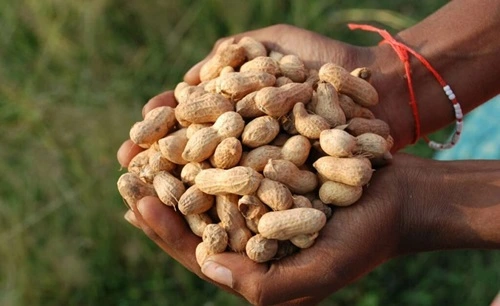One of the subjacent oilseed crops that is widely thought of worldwide is groundnut or peanut. Groundnut in India has much significance in agriculture and the same time equally lubricates the economy and food security of the country. As of 2024 for some states, these are the states’ where ground nut is actively cultivated and some of the states even lead the way, in terms of production. A better understanding can be obtained by exploring the 5-leading groundnut-producing states of India in 2024.

1. Gujarat:
Naturally, Gujrat has been one of the leading states in the highest production of groundnut in India, due to the interrelated causes which are associated with good agro feel and dynamic area under cultivation. Regarding soil type and rainfall, which are necessary for groundnut cultivation, the state is endowed with an alluvial soil-rich material and adequate rainfall that provides the ideal ecological factors for groundnut growth. Furthermore, the state of Gujarat is known for its innovative farming techniques and enterprise, which additionally allow for increasing productivity of groundnut production. Gujarat is the proud owner of a robust farmer network with sustainable techniques. As a result, they always remain a groundnut production leader.
2. Rajasthan:
Despite the human proportions of Rajasthan being dominated by the drought areas of the country, it has become one of the essential groundnut producers in India. The government applies advanced irrigation methods as those of dripping and sprinkling ones to overcome scarcity difficulties. The other thing that makes groundnut farming very popular among local farmers is the fact that its sandy soil is properly suited for farming this crop. The Government of Rajasthan, through the supporting methods and with the aid of technological developments, has observed a continuous expansion of the groundnut production, so being able to take its pride in the second place among the highest producers in India.
3. Tamil Nadu:
Tamil Nadu’s coastal zones have conducive climatic conditions for the growth of groundnut, making the State to be in the leading edge of groundnut production. The proximity of fertile soils and an unlimited amount of sunshine are the conditions that enhance weights per hectare. Also, Tamil Nadu’s agricultural policies and actions that have been put in place have led farmers into adopting modern farming methods, which in turn has improved productivity amongst farmers. The State Government’s role in encouraging environmental friendliness to the agriculture sector stands to be the force behind the State being one of the top producers of groundnuts in India.
4. Andhra Pradesh:
Farming outside Andhra Pradesh state, undoubtedly, is a highly catalytic force with its broad farming fields and excellent climatic conditions. The state has already engineered a comprehensive irrigation infrastructure made up of networks of canals and reservoirs, thus ensuring crops with regular supplies of water throughout the growing cycle. Additionally, the research and extension activities in Andhra Pradesh have been the reason for the wide area covered by groundnut farming and cultivation of improved high-yield varieties. Such efforts have been the foundation of the state’s groundnut plantation. They are key to the nation’s production boom as it should be self-sufficient in terms of supplies.
5. Karnataka:
Karnataka, an evocative metaphor for the land of plenty of the country is rich in varied agro-climatic zones and has important agricultural policies that favor the farmers in the state. The black soil regions of the state are the most ideal places for growing groundnuts and this has affected positive farming yields. Karnataka has also adopted technology-colonized farming practices such as precision farming and mechanization to grow farmers’ productivity and efficiency. Guided by research and innovation, the state is poised to maintain record production levels as the largest groundnut producer in India.
Conclusion:
The employment opportunities for farmers provided by the groundnut sector in India are enormous and at the same time, the country’s food security earnings are enhanced by huge returns. Groundnut production figures by Gujarat, Rajasthan, Tamil Nadu, Andhra Pradesh, and Karnataka are taking the lead in 2024, highlighting the variations in weather and farm practices. With technological innovations, improved irrigation techniques, and established policies, groundnut production in the country will increase to satisfy local and foreign market demand.
FAQs:
Q1. What are the central issues that exceed the productivity of groundnut farmers in India?
Ans: Indian groundnut growers often face several issues, like price drops, outbreaks of pests and diseases, little access to credits and inputs, and dependence on monsoons for irrigation.
Q2. Why is it important to contribute groundnut cultivation towards sustainable agriculture?
Ans: Groundnut farming is acknowledged as one of the most sustainable agricultural systems in terms of soil fertility improvement through its nitrogen-fixation characteristic, erosion reduction using its deep root system, and alternating with other crops as a means of maintaining a balance against pest and disease occurrence.
Q3. Whether there are any installments from the government to help groundnut farmers is the issue.
Ans: Indeed, the government of India uses a high number of schemes and programs for patch adding the fates of peanut farmers, such as PMFBY (Pradhan Mantri Fasal Bima Yojana), Soil Health Card Programme and NMOOP (National Mission on Oilseeds and Oil Palm) are just a few of them. Their target is to empower small-scale farmers by increasing effectiveness, reducing risks, and providing income.

